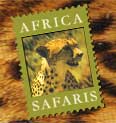Travel Information on Namibia
Luxury Safari Camps in Namibia
Little Kulala Camp
Little Ongava Camp
Serra Cafema
Botswana Safari: Luxury Safari Camps in Botswana
Mombo Camp
Little Mombo Camp
Jao Camp
Kings Pool Camp
Vumbura Plains Camp
Jacks Camp
Abu Camp
Namibia, often called "the land God made in anger" by the ancient San tribes, is home to quaint coastal towns, tribal villages and the 80-million-year-old Namib Desert.
Basic Facts on Travel to Namibia:
Full Name: Republic of Namibia (formerly South West Africa)
Capital: Windhoek
Independence: 21 March 1990
Time: GMT +1 hour (4 Apr – 4 Sept) / GMT +2 hours (5 Sept – 3 Apr)
Population: 1 648 270 (estimated July 1999)
Area: 825 418km²
Currency: Namibian Dollar (N$)
\President: President Sam Nujoma (since 21 March 1990)
Communication:
International dialling code when calling Namibia: +264.
International dialling code when dialling out from Namibia: 09.
A direct international dialling service is available from the major hotels and lodges in Namibia.
Electricity
Electricity is generally supplied at 250 volts AC.
Language:
English is the official language. Other Languages spoken include Ovambo, Damara, Kavango and Herero, German and Afrikaans are widely spoken.
Culture:
The Kavangos tribe make up 9%. The Herero, whose women dress in distinctive Victorian style, make up about 7%. The Himba, who are easily identified by their statuesque beauty, intricate hairstyles and ornamental copper necklaces and anklets, are a subgroup of the Herero. The Damara (or Nama) make up 5% of the population. They speak with interesting click sounds. The San (Bushmen) make up about 2% of the population and are the last representatives of the hunter gatherer tradition. There are also remaining German colonials.
Geography & Landscape:
Namibia is a large, mostly arid country. It can roughly be divided into four geographical regions:
- the Namib Desert along the Atlantic coast;
- the central plateau;
- the Kalahari sands
- the densely wooded bushveld of the Kavango and Caprivi regions.
Spectacular shifting sand dunes spread inland from the coast, which has been described by many as the most desolate coastline in the world. The plateau runs from north to south and slopes away to the east into the sand basin of the Kalahari. A number of rivers run off the escarpment through dramatic canyons, including the Fish River Canyon, the world’s second largest canyon system.
Climate:
Summer: November to April.
In summer, the days are generally hot and sunny. Daytime temperatures can rise to 35ºC (95ºF) and night temperatures drop to around 14ºC (58ºF) to 18ºC (65ºF). The coastal region is cool and dry throughout the year.
The rainy season runs from February to March and average rainfall varies from less than 50mm along the coast to 350mm in the central region and 700mm in the far north-eastern region.
Winter: May to October.
In winter, the days are dry, sunny and mild to warm while evening temperatures drop sharply. Daytime temperatures generally reach 23ºC (73ºF) and can drop to as low as 0ºC (32ºF) to 10ºC (50ºF) at night.
It can be quite cold and windy at the coast, for which warm clothing and a windbreaker are necessary.
When to travel:
Namibia is an all year round ecological and wildlife destination. However, certain seasons are best for special interest groups:
Best birding safaris are during the summer months because of the greater variety of species to be found.
Best botanical months are December to May when the vegetation turns green, and also when most plants are in flower.
Namibia is becoming very popular as an all year round destination.Traditionally, peak season is from July to October and middle season is from May to June. Book in advance during this time. Christmas and New Year is peak season for local holidaymakers.
Map of Namibia:
|




